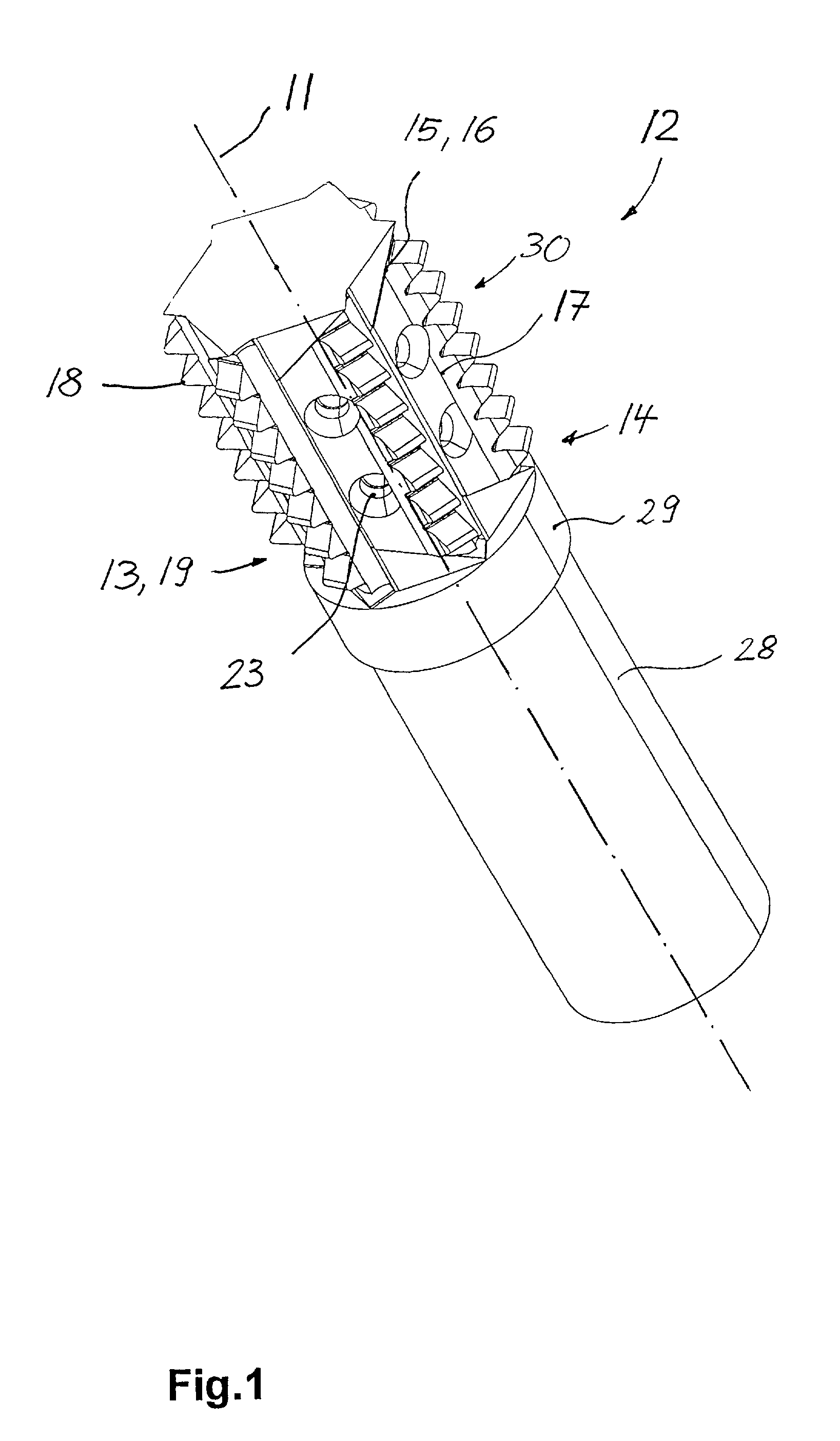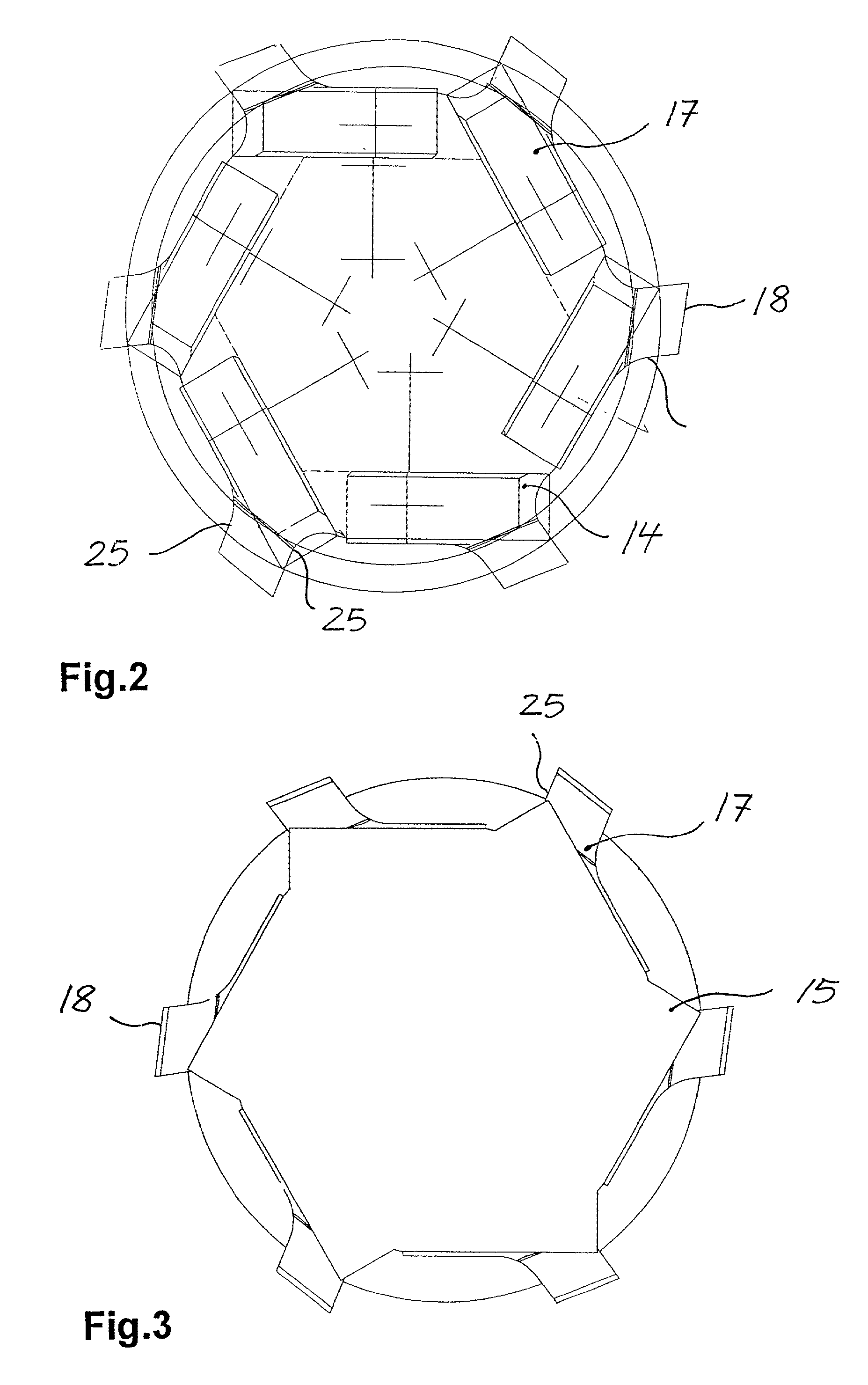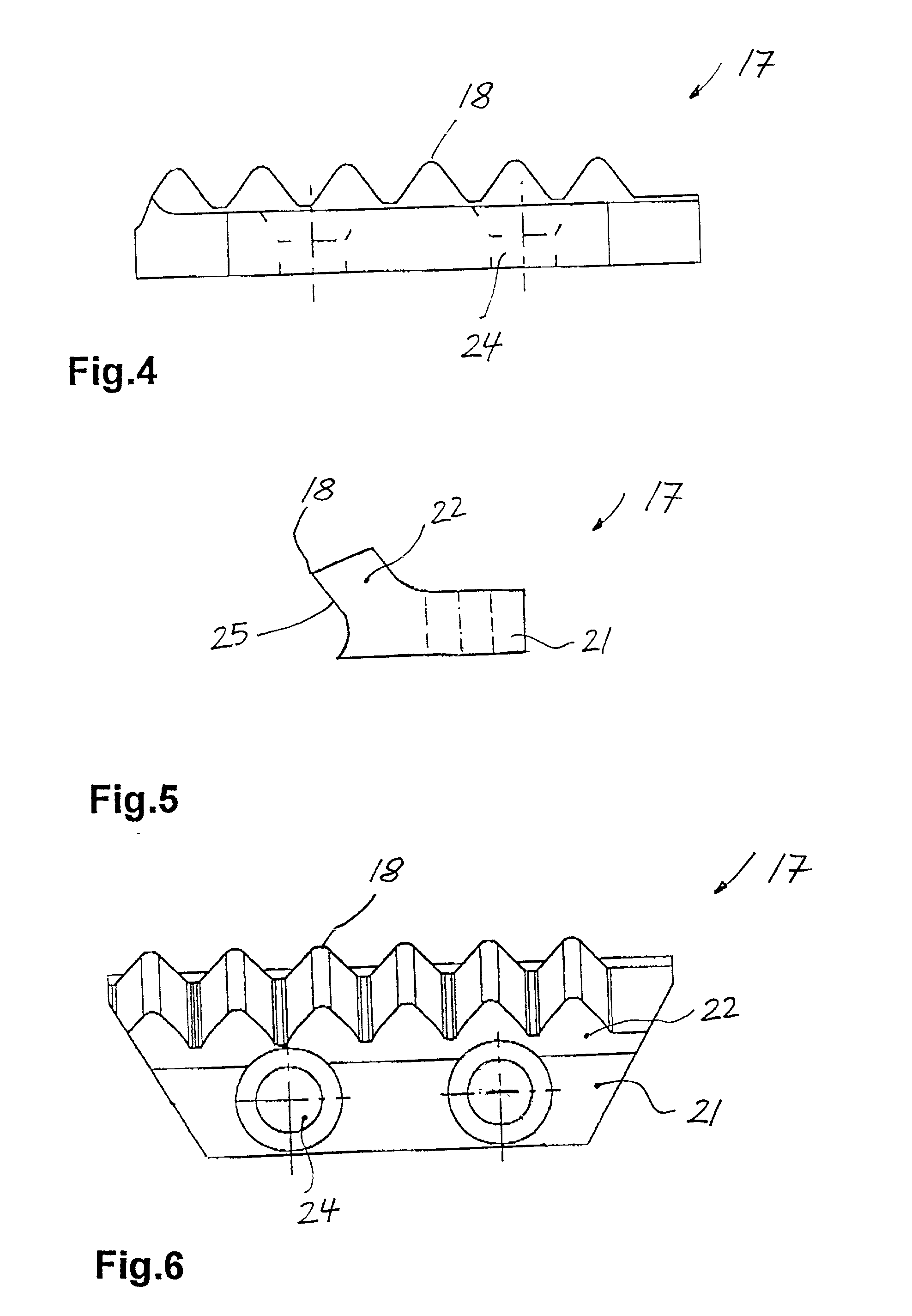Milling tool and insert, particularly thread milling cutter
a technology of inserts and milling tools, which is applied in the direction of thread cutting tools, metal-working equipment, milling equipment, etc., can solve the problems of reducing the stability of tools, reducing the depth of grooves, threads, etc. produced on workpieces, and reducing the risk of loosening or breaking of fastening elements
- Summary
- Abstract
- Description
- Claims
- Application Information
AI Technical Summary
Benefits of technology
Problems solved by technology
Method used
Image
Examples
first embodiment
[0039] FIG. 1 shows a milling tool equipped with milling inserts 17. The milling tool has a solid body with a cylindrical cross-section. The milling tool is made from steel and the milling insert 17 from carbide. Such a milling tool embodiment e.g. has a diameter of 32 mm and a length of 129 mm. The milling tool has a holding area 28, a stop member 29 and a reception area 30. In operation the milling tool rotates about its centre axis, i.e. the rotational milling axis 11.
[0040] The holding area 28 has a cylindrical cross-section. It is chamfered at its end facing the reception area 30. In the first milling tool embodiment the reception area extends over somewhat more than half of the entire tool length. The stop member 29 is connected to the holding area 28. The stop member 29 has a larger diameter than the holding area 28 and its length is approximately 1 / 5 of the length of the holding area 28. The reception area 30 of the milling tool is connected to the stop member 29.
[0041] FIG....
fourth embodiment
[0048] FIG. 13 shows the milling tool in the form of a shankless hobbing cutter. The hobbing cutter has a through centre hole 32 for the introduction into a not shown mandrel-like mounting support. On the underside of the hobbing cutter is formed a through, radial groove 33, which protects the hobbing cutter against twisting on the mandrel--like mounting support.
[0049] FIG. 14 shows a fifth embodiment of the milling tool. As in the first embodiment according to FIG. 9, the milling tool has a holding area 28 and a reception area 30 with six receptacles 14. The receptacles 14 have in each case two bearing and orientation sections 34, 34a, whose inclined lateral faces form bearing and orientation surfaces 15.
[0050] The two bearing and orientation surfaces 15 of a receptacle 14 are inclined to a differing extent with respect to the horizontal. Thus, the bearing and orientation surface 15 is steeper on the lower bearing and orientation section 34 directed towards the holding area 28 than...
PUM
 Login to View More
Login to View More Abstract
Description
Claims
Application Information
 Login to View More
Login to View More - R&D
- Intellectual Property
- Life Sciences
- Materials
- Tech Scout
- Unparalleled Data Quality
- Higher Quality Content
- 60% Fewer Hallucinations
Browse by: Latest US Patents, China's latest patents, Technical Efficacy Thesaurus, Application Domain, Technology Topic, Popular Technical Reports.
© 2025 PatSnap. All rights reserved.Legal|Privacy policy|Modern Slavery Act Transparency Statement|Sitemap|About US| Contact US: help@patsnap.com



